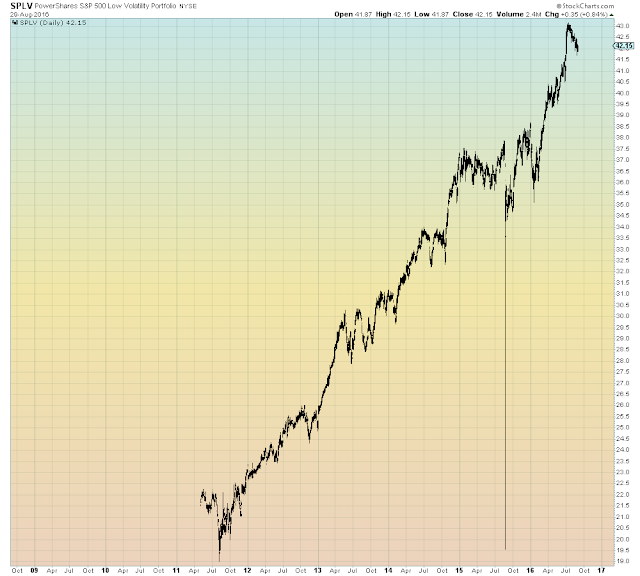Money for nothing. Chicks for free...
Risk Parity, Smart Beta, and Low Volatility are converging on the exact same strategies of overloading risk under the universal asinine assumption that low volatility = low risk...
Risk parity (or risk premia parity) is an approach to investment portfolio management which focuses on allocation of risk, usually defined as volatility
The low volatility exchange-traded fund (ETF) craze has little to do with investors seeking less volatility.
Instead, the billions of dollars flowing into ETFs that track stocks exhibiting the least amount of volatility is a classic case of performance-chasing.
This deluge of inflows has turned low-volatility ETFs into the fastest-growing smart-beta category ever
This helps explain why everyone and their mother is launching smart-beta ETFs.
The three largest "low volatility" ETFs are USMV, SPLV, and EFAV. All three shown here i.e. they're in the exact same assets. Volume is from USMV:
The top holding for both USMV and SPLV is AT&T:
The second largest common holding is JnJ, what else...
But really, what could go wrong?
At some point, the soccer ball will inevitably leave low-volatility land...For instance, currency-hedged ETFs had a good, two-year run of outperformance. The trade inevitably stopped working, with $10 billion of outflows recorded so far this year. The same fate awaits low-vol ETFs...
USMV:SPY ratio:
This deluge of inflows has turned low-volatility ETFs into the fastest-growing smart-beta category ever...
"Getting in was easy, but on the way out there were no more idiots for the other side of the trade"






